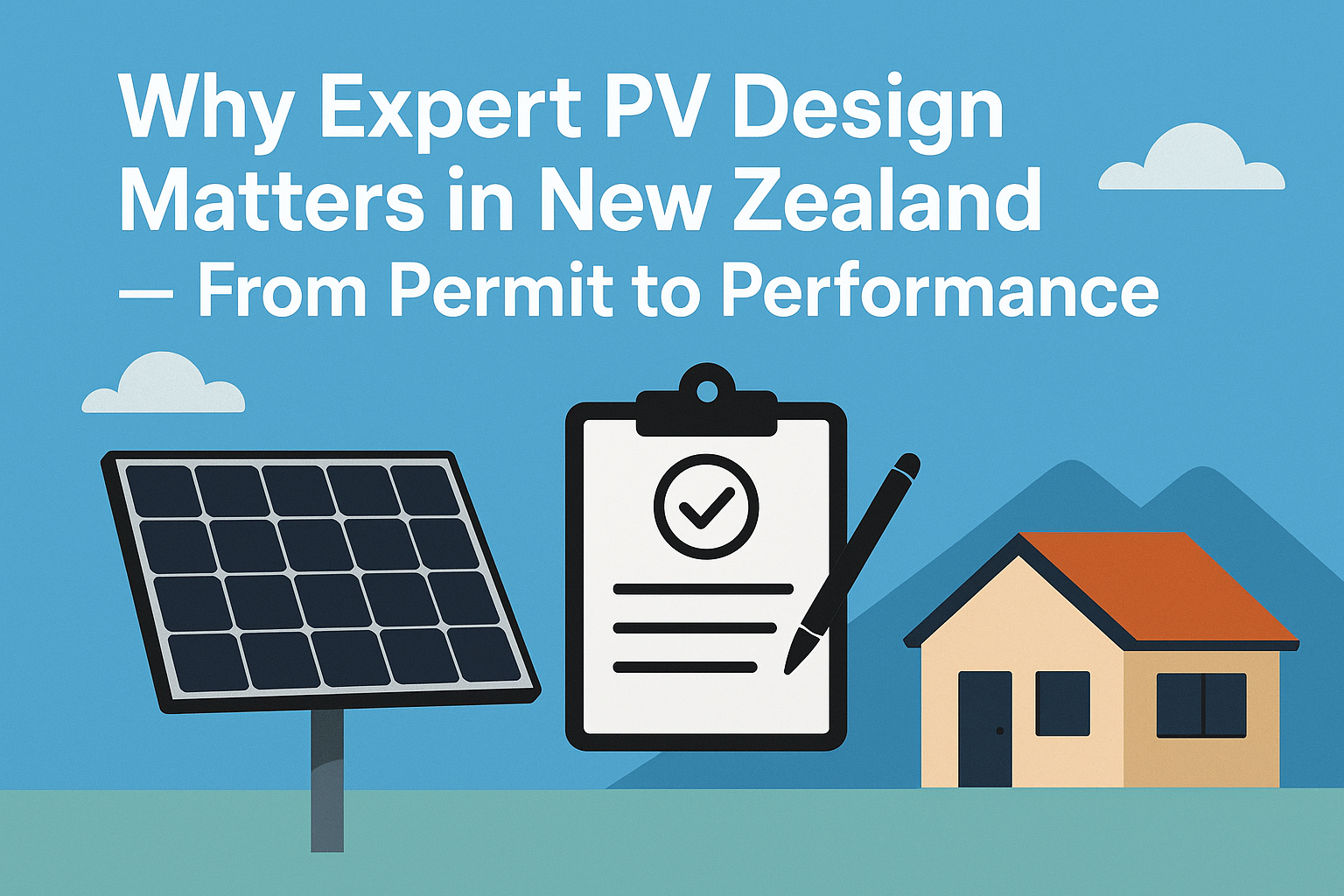Table of Contents
At One Place Solar, we understand that successful solar system implementation in New Zealand begins long before the panels hit the roof. Proper PV design, expertise from a solar design engineer, and meticulous solar permit designing are all vital for delivering safe, efficient, and compliant solar solutions that truly perform.
1. NZ-Specific Standards Guide Every Design
In Aotearoa, solar PV installations must comply with AS/NZS 5033 (PV array safety) and AS/NZS 3000 (electrical wiring standards) primesolar.shophealthyhomedesignguide.co.nz. These regulations detail how strings must be voltage-corrected for ambient temperatures, how cable voltage drop is limited, and how arrays must be protected and labeled. Without these, you risk:
- Failed council or utility inspections
- Efficiency losses
- Safety hazards
That’s why our solar design process prioritizes these standards—delivering peace of mind along with performance.
2. Design Must Reflect Local Solar Conditions
New Zealand is not one-size-fits-all when it comes to solar:
- Locations like Queenstown offer excellent solar yields and financial returns, with IRRs up to 7–14% for north-facing systems EECA.
- Tilt and orientation matter—north-facing panels at 30° tilt deliver the best year-round results EECACurrent Generation.
- In places like Auckland, solar is equally compelling due to the moderate climate and favorable electricity pricing EECA.
A solar design engineer at OPS ensures your system is tailored to your site’s climate, shading, and grid context—maximizing generation and savings.
3. Permits & Compliance: Don’t Skip the Fine Print
Depending on your region and system type:
- Ground-mounted PV arrays over 40 m² or requiring engineering review may require a building consent Auckland Council.
- Heritage zones, boundary setbacks, or roof-cladding replacements may also trigger a resource consent under the RMA Wikipedia+1.
Our dedicated team handles solar permit designing from start to finish—ensuring your project gets the right approvals swiftly and smoothly.
4. The OPS Advantage: Tight Integration from Design to Delivery
By combining:
- Rigorous, code-compliant PV design
- Localized expertise via a dedicated solar design engineer
- End-to-end solar permit designing
…OPS delivers solar systems that are boardroom-ready and built for long-term performance.
Conclusion
Relying on “look-and-install” solar setups may feel quick—but they often cost more in delays, inefficiencies, or compliance headaches. At OPS, we do it differently:
We design your system for your site, for your regulations—and for your return.
